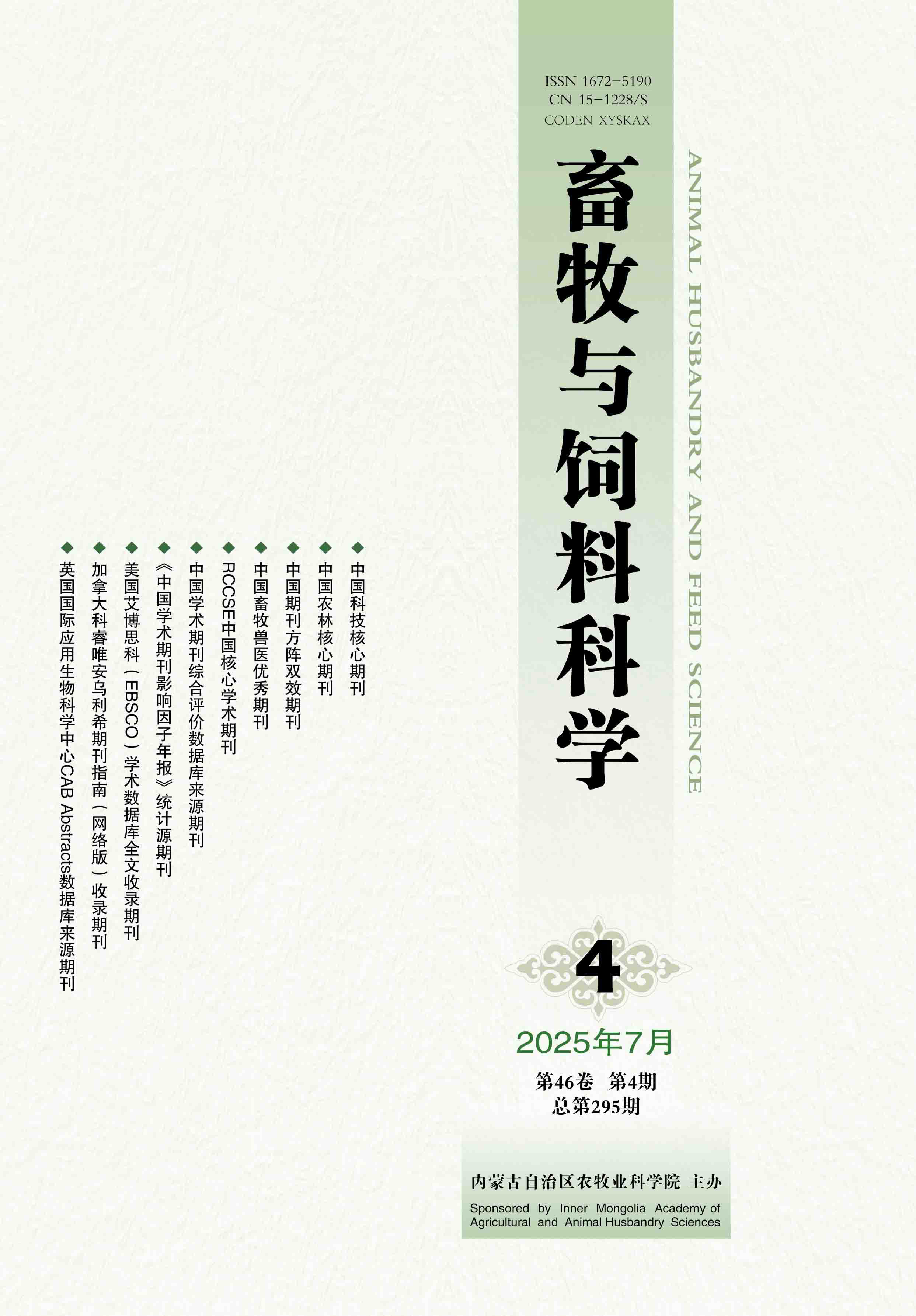Select
Genetic Parameter Estimation of Feed Conversion and Body Size Traits of Fengxiang Guixiang Chickens
WANG Yaping, WANG Jiahong, JIANG Shiyuan, CHEN Tianwei, LI Daojin
2024, 45(6):
36-41.
doi:10.12160/j.issn.1672-5190.2024.06.006
Abstract
(
194 )
PDF (825KB)
(
48
)
Save
References |
Related Articles |
Metrics
[Objective]This study was conducted to estimate the genetic parameters of feed conversion ratio (FCR), spur length (JJ), shank length (JC), and shank circumference (JW) in Fengxiang Guixiang chicken F-line roosters, and to establish a breeding model for this breed. [Method] In this study, two batches of 2 205 male Fengxiang Guixiang chickens, aged 70 days, were selected for analysis. The body weight at 70 days of age (BWG1) and the body weight at 112 days of age (BWG2) were recorded. Daily feed intake and the amount of feed remaining from 70 to 112 days of age were monitored to calculate the average daily feed intake and feed conversion rate. Additionally, the JJ, JC, and JW metrics of the chickens at 112 days of age were determined. Data analysis and genetic parameter estimation were conducted using SPSS software and the REML algorithm within ASReml software, in conjunction with an animal trait model. [Result] Except for the JJ trait, the batch effect had an extremely significant (P <0.01) influence on all the tested traits of the F-line cocks of Fengxiang Guixiang chicken; the heritability of JJ, JC, JW, BWG1, BWG2, ADG, ADFI, and FCR were 0.470 8, 0.321 0, 0.552 9, 0.341 3, 0.464 1, 0.472 3, 0.440 1, and 0.339 1, respectively, all belonging to medium to high heritability traits; the coefficient of variation of JJ was 0.27, the highest among all the traits measured in the experiment, indicating that this trait has great breeding potential. FCR had extremely significant (P <0.01) negative genetic correlations and negative phenotypic correlations with JC, JW, ADG, and ADFI, while there were no significant (P >0.05) phenotypic correlations and genetic correlations between JJ and other traits. [Conclusion] The spur length, shank length, shank circumference, body weight at 70 days of age, body weight at 112 days of age, daily weight gain, average daily feed intake, and feed conversion ratio of male Fengxiang Guixiang chicken F line exhibit medium heritability. These traits are primarily influenced by genetic factors. The genetic parameters of Fengxiang Guixiang chicken estimated in this study can serve as a foundation for the genetic improvement of the population, thereby enhancing the efficiency of breeding efforts.








